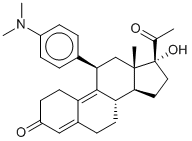Hence nicotine-associated desensitization could result in a behavioral phenotype that is similar to nAChR antagonism. Behaviorally, these nicotine findings are consistent with previous data. A preponderance of the evidence suggests that low doses of nicotine promote anxiolysis-like behavior, moderate doses of nicotine support reward-like behavior, and high doses of nicotine increase anxiety-like behaviors. Similarly to low dose nicotine and DHbE, anxiolytic drugs such as benzodiazepines increase lever pressing during a presentation of an aversive CS compared to when saline is administered, decrease digging in the marble burying task and increase open arm activity in an elevated plus maze. Studies in humans show that trait anxiety leads to elevated cued fear conditioning of aversive stimuli and imaging studies show this behavioral tendency is positively correlated with an exaggerated activation of the amygdala and anterior cingulate cortex, brain areas shown to regulate rodent behavior during fear conditioning tasks. CER, marble burying and the elevated plus maze have good predictive validity for anxiolytic drug efficacy. Together with previous data, the present studies suggest that inactivation of nAChRs may promote anxiolysis-like behavior and may have mechanistic implications for why individuals smoke to relieve anxiety. These studies utilized CER, marble-burying and an elevated plus maze task to show that nicotine and DHbE could both stimulate and suppress behavior in a way that is consistent with currently available anxiolytic drugs. Marble burying, however is also sensitive to antidepressant drugs and antipsychotics suggesting that digging behavior in rodents may be driven by an underlying system that is common to the effects of these diverse drug classes. Individuals diagnosed with anxiety disorder, depression or schizophrenia all have a significantly elevated risk for tobacco dependence. In addition to the high concordance with tobacco use, there is a high comorbidity for  diagnosis of anxiety with depression and schizophrenia, suggesting that there is a common underlying etiology for these disorders. Some suggest that the “nonpurposeful” digging behavior in the marble burying task may model obsessive compulsive anxiety disorder. Drugs such as clozapine, apiprizole and risperidone that are used to augment the effects of mood stabilizers also reduce marble burying activity. b2*nAChRs are ubiquitously expressed in the brain where their activation on the Tulathromycin B neuron soma and terminals promotes Albaspidin-AA release of GABA, serotonin, dopamine, norepinephrine and acetylcholine, neurotransmitters that regulate mood and arousal and that are believed to contribute to the etiology of anxiety, depression and schizophrenia. The b2*nAChRs have also been implicated in contributing to rodent models of depression-like behavior with mecamylamine and partial agonists of b2*nAChRs showing anti-depressant-like efficacy. Unlike our observations in the marble burying task, however, administration of DHbE blocks the antidepressantlike effects of the b2*nAChR partial agonists varenicline and sazetidine in the forced swim task, showing a dichotomy with the present results in the elevated plus maze which suggest that antagonism of promotes anxiolysis-like behavior. It is possible that our findings in the CER task reflect changes in learning that are independent of fear and anxiety-like behavior. While it is possible that drug injection could result in statedependent learning effects, we do not believe this was the case given that animals showed dose-dependent effects.
diagnosis of anxiety with depression and schizophrenia, suggesting that there is a common underlying etiology for these disorders. Some suggest that the “nonpurposeful” digging behavior in the marble burying task may model obsessive compulsive anxiety disorder. Drugs such as clozapine, apiprizole and risperidone that are used to augment the effects of mood stabilizers also reduce marble burying activity. b2*nAChRs are ubiquitously expressed in the brain where their activation on the Tulathromycin B neuron soma and terminals promotes Albaspidin-AA release of GABA, serotonin, dopamine, norepinephrine and acetylcholine, neurotransmitters that regulate mood and arousal and that are believed to contribute to the etiology of anxiety, depression and schizophrenia. The b2*nAChRs have also been implicated in contributing to rodent models of depression-like behavior with mecamylamine and partial agonists of b2*nAChRs showing anti-depressant-like efficacy. Unlike our observations in the marble burying task, however, administration of DHbE blocks the antidepressantlike effects of the b2*nAChR partial agonists varenicline and sazetidine in the forced swim task, showing a dichotomy with the present results in the elevated plus maze which suggest that antagonism of promotes anxiolysis-like behavior. It is possible that our findings in the CER task reflect changes in learning that are independent of fear and anxiety-like behavior. While it is possible that drug injection could result in statedependent learning effects, we do not believe this was the case given that animals showed dose-dependent effects.